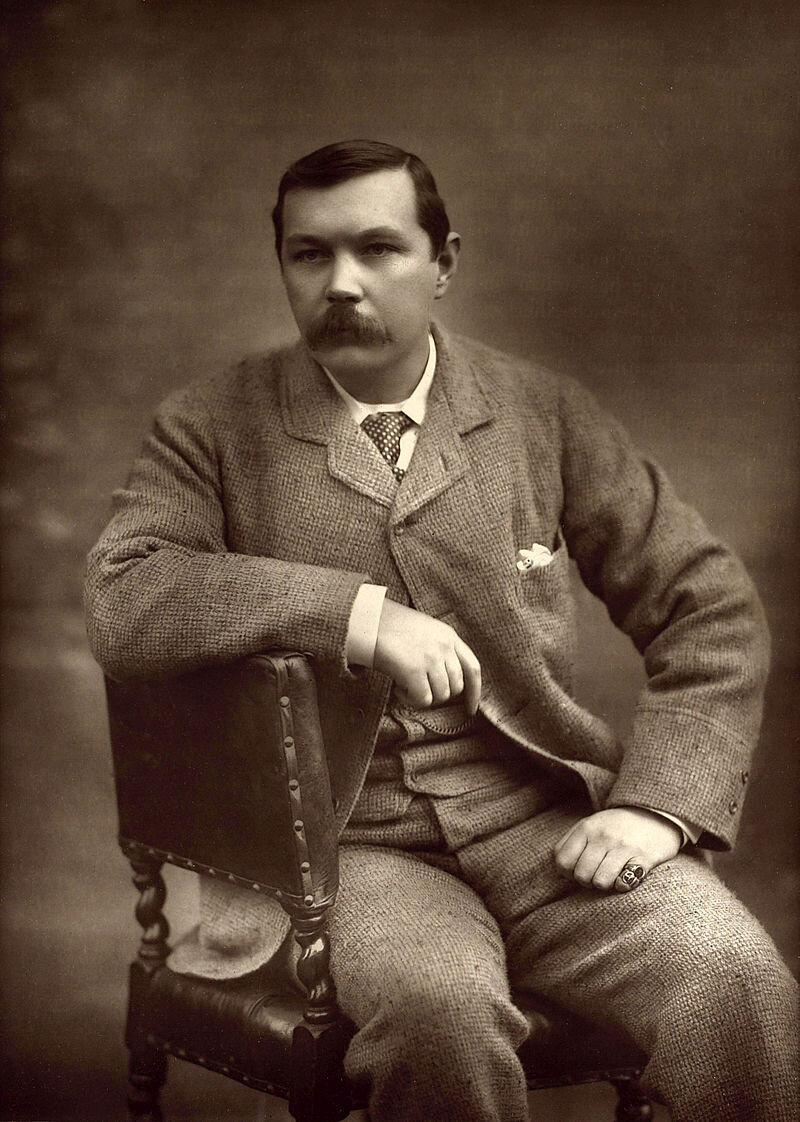Arthur Conan Doyle
Sir Arthur Ignatius Conan Doyle (22 May 1859 – 7 July 1930) was a British writer, who created the character Sherlock Holmes. Originally a physician, in 1887 he published A Study in Scarlet, the first of four novels and more than fifty short stories about Holmes and Dr. Watson. The Sherlock Holmes stories are generally considered milestones in the field of crime fiction.
Doyle was born on 22 May 1859 at 11 Picardy Place, Edinburgh, Scotland. From 1875 to 1876, he was educated at the Jesuit school Stella Matutina in Feldkirch, Austria. His family decided that he would spend a year there with the objective of perfecting his German and broadening his academic horizons.
From 1876 to 1881, Doyle studied medicine at the University of Edinburgh Medical School, including periods working in Aston (then a town in Warwickshire, now part of Birmingham), Sheffield and Ruyton-XI-Towns, Shropshire. During that time, he studied practical botany at the Royal Botanic Garden in Edinburgh. While studying, Doyle began writing short stories. His earliest extant fiction, "The Haunted Grange of Goresthorpe", was unsuccessfully submitted to Blackwood's Magazine. His first published piece, "The Mystery of Sasassa Valley", a story set in South Africa, was printed in Chambers's Edinburgh Journal on 6 September 1879. On 20 September 1879, he published his first academic article, "Gelsemium as a Poison" in the British Medical Journal, a study which The Daily Telegraph regarded as potentially useful in a 21st-century murder investigation.
Doyle struggled to find a publisher for his work. His first work featuring Sherlock Holmes and Dr. Watson, A Study in Scarlet, was written in 3 weeks when he was 27 and taken by Ward Lock & Co on 20 November 1886, giving Doyle £25 (£2700 today) for all rights to the story. The piece appeared one year later in the Beeton's Christmas Annual and received good reviews in The Scotsman and the Glasgow Herald.
Doyle was found clutching his chest in the hall of Windlesham Manor, his house in Crowborough, East Sussex, on 7 July 1930. He died of a heart attack at the age of 71. His last words were directed toward his wife: "You are wonderful." At the time of his death, there was some controversy concerning his burial place, as he was avowedly not a Christian, considering himself a Spiritualist. He was first buried on 11 July 1930 in Windlesham rose garden.
His second wife was buried alongside him ten years later. The graves remained until 1955 when the family decided to fulfil Lady Jean’s original wish that they be buried together at All Saints. So early one morning a double lead casket containing the remains of Sir Arthur and Lady Jean was delivered to the churchyard. A huge double grave had been dug all the previous day. After a short private ceremony the couple were laid to rest, and a public announcement was made about who had arrived.
Doyle’s interest in spiritualism was a mild embarrassment to the Church. Ever prepared to compromise, the Church of England agreed he could come to the churchyard – but buried his remains by the far boundary. Perhaps the Almighty had stronger views? The oak tree over the grave still bears the scars of being struck by lightning twice – the last time in 1969. Whether this was a sign of approval or displeasure has yet to be revealed to us.
A statue honours Doyle at Crowborough Cross in Crowborough, where he lived for 23 years. There is a statue of Sherlock Holmes in Picardy Place, Edinburgh, close to the house where Doyle was born


